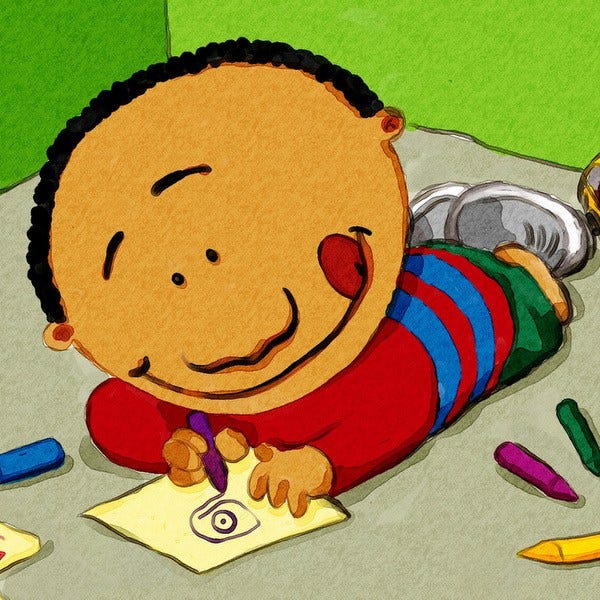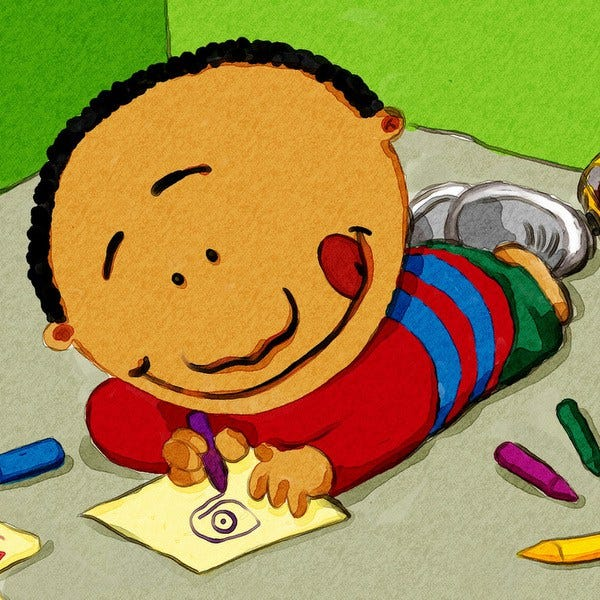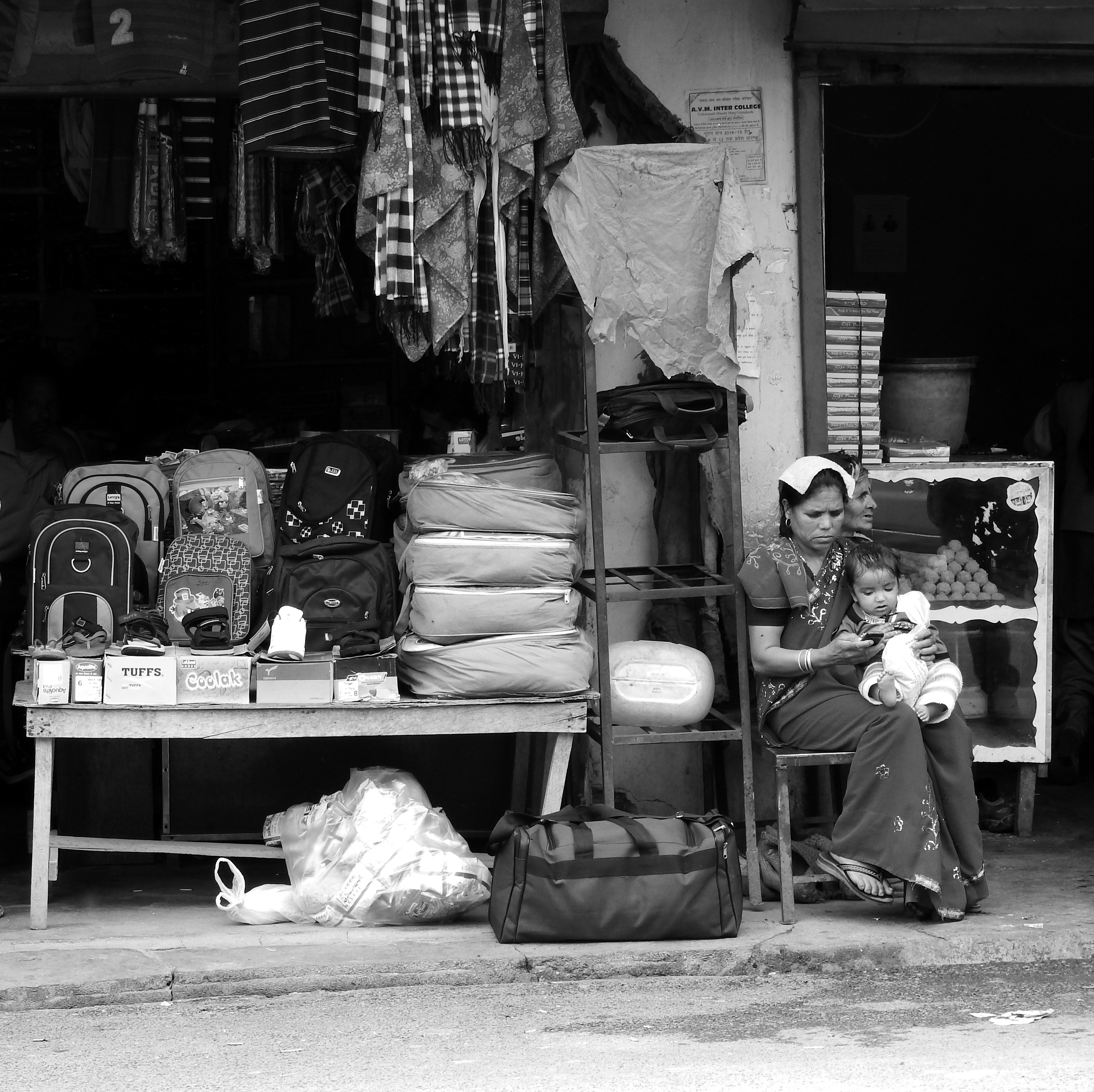I have always wondered how I ended up being an “artist”, among other things. After years of ‘research’, with nearly 20 of them spent as a professional illustrator, I think I might have an answer. It takes me back all the way to my toddler days… Footloose and fancy free, with a simple daily routine that comprised mostly eating, pooping and sleeping. And scribbling. Lots and lots of it.
Crayons on room walls, pencils on scraps of paper, ballpoint pens on the pages of books, a stick on the ground in a freshly-swept front yard, even a piece of red brick on compound walls were means for artistic expression. Those simple days also meant sitting with Grandma Ariyayi, watching her draw leaves and flowers on tree shapes that were wobbly but amazingly symmetrical. The main training at the Ariyayi School of Limitless Art was finishing up her drawings while she sat mending clothes with needle and thread, sewing buttons on shirts whether they needed them or not. Spending a good part of the day scribbling on books with my partner in crime, my older brother KD, who shared shares the same case of itchy-scribbly fingers and well, imagination…
But always drawing. Without stop. How come, did you ask? Simple, actually. Nobody stopped me. Not my parents, not Grandma, no one, really. And that, my dear friend, is where the key lies to unlocking a child’s artistic potential. Don’t stop them. “Don’t draw on the walls!” “Not on that book!” “Stop colouring the tablecloth!” “Don’t finish those crayons, I bought you a set just two weeks ago!” “I told you, no more colouring books!” “No watercolours, it is messy!” “No markers, they won’t wash off!” “Are you going to sit around drawing all day? Go out and play!”“No!” “Don’t!” “Stop!” Sound familiar? I’m sure many of them do, or some variation on the theme. And that’s what turns their creative tap off.
Adults, knowingly or unknowingly, create a negative association with the activity of drawing in children at an early age. It sounds very simplistic but it’s true that children deal with all those Nos and Don’ts and Stops by simply adding them to their long assortment of “things that will get me into trouble with grown-ups”. Along with wasting food, eating too much chocolate, not brushing their teeth… that all-too familiar, endless list. But drawing? What is it doing on that list? And why are we putting it there in the first place? Just stop.

Watching adults dealing with scribbling toddlers, their own or others’, in their homes and other places was part of my primary research. Having a child of my own years later and watching him go through his own scribbler phase, that was my thesis material. A ringside view of what makes — or, more importantly, doesn’t make — a child an artist. An epiphany too, in the end.
As long as we allow our little ones to explore their crude, annoying habit, they stand a good chance of continuing their art. You know as well as I do, that they aren’t always annoying. Sometimes, when it suits our mood and convenience, especially when it could score us brownie points, the same drawings are “cute” or “oh, so creative” and so on, right? Well, the child isn’t doing anything different, it is just you, looking at it differently. Try looking at it differently more often, if all-the-time is too much trouble. You’ll have a happier child at home at the least, someone who will stay occupied for the duration of their drawing. Now, that’s a good deal, take it! If it doesn’t work? Your money back, no questions asked. Don’t throw away the receipt 😉



